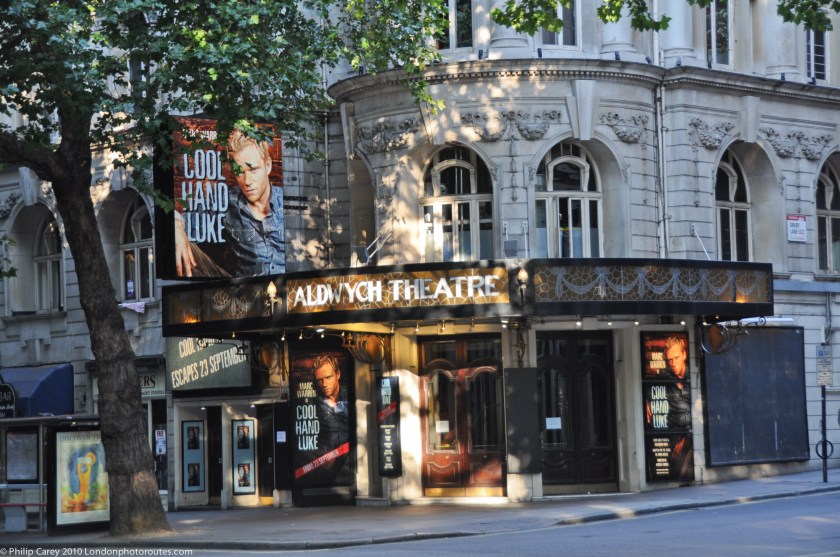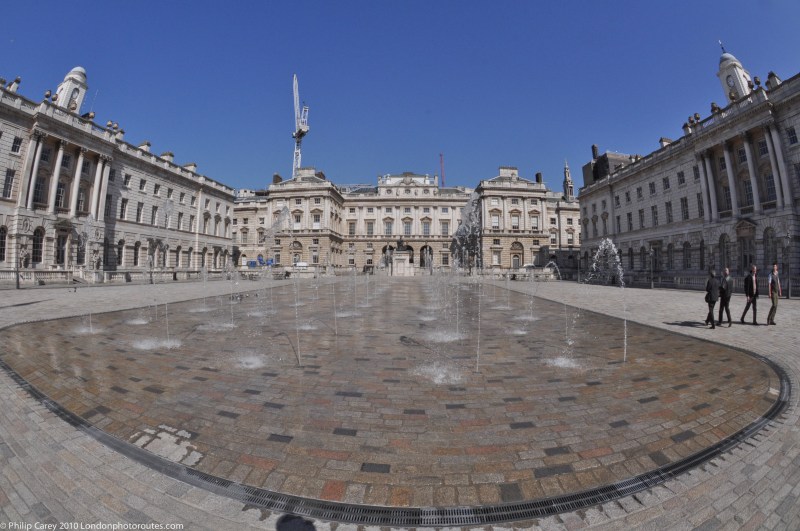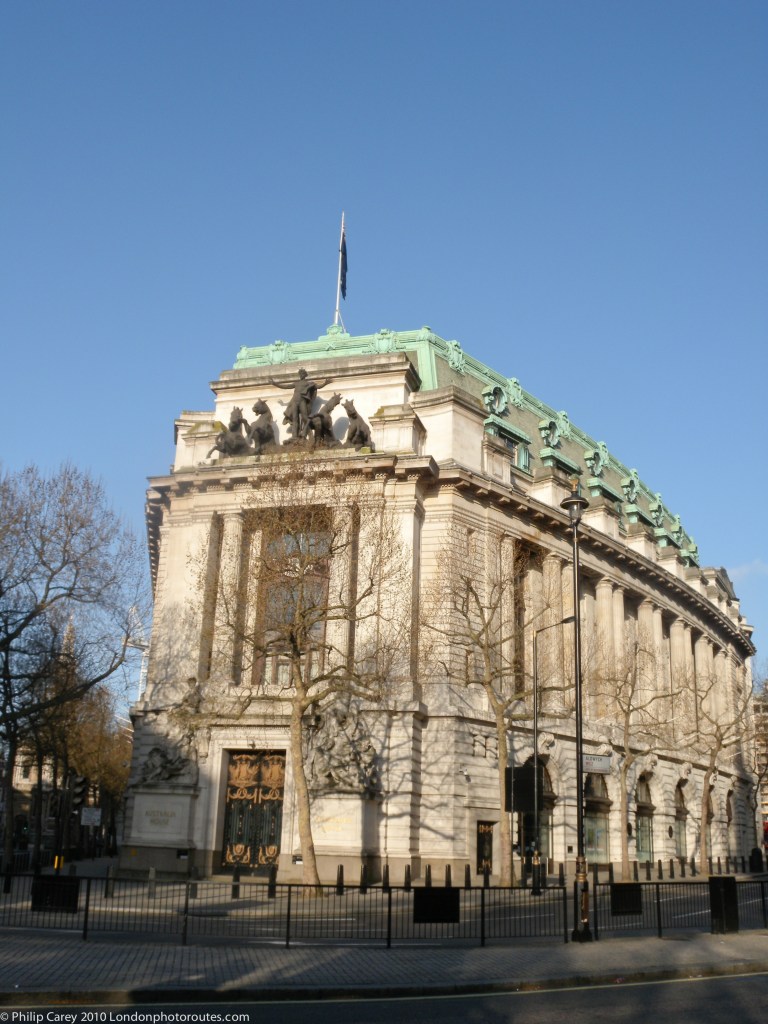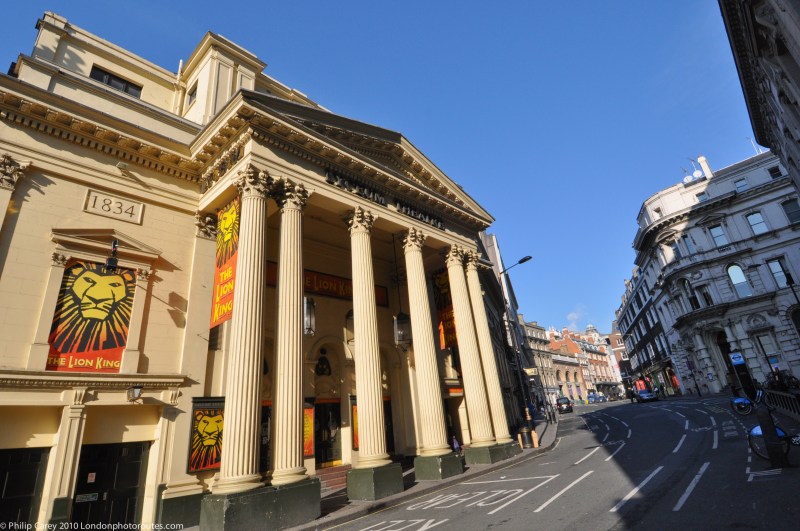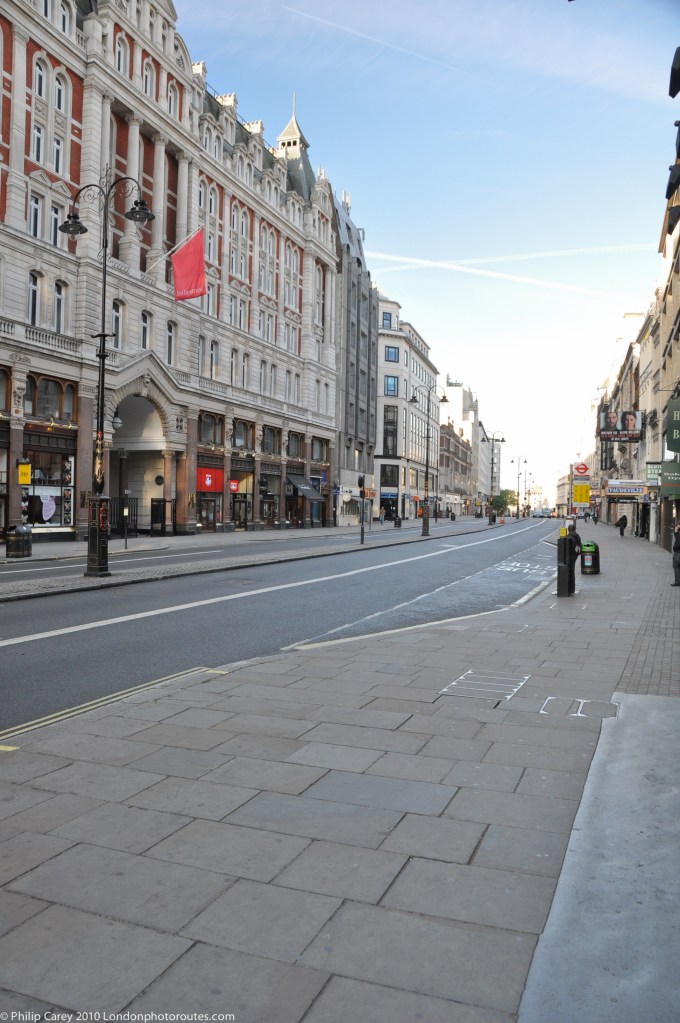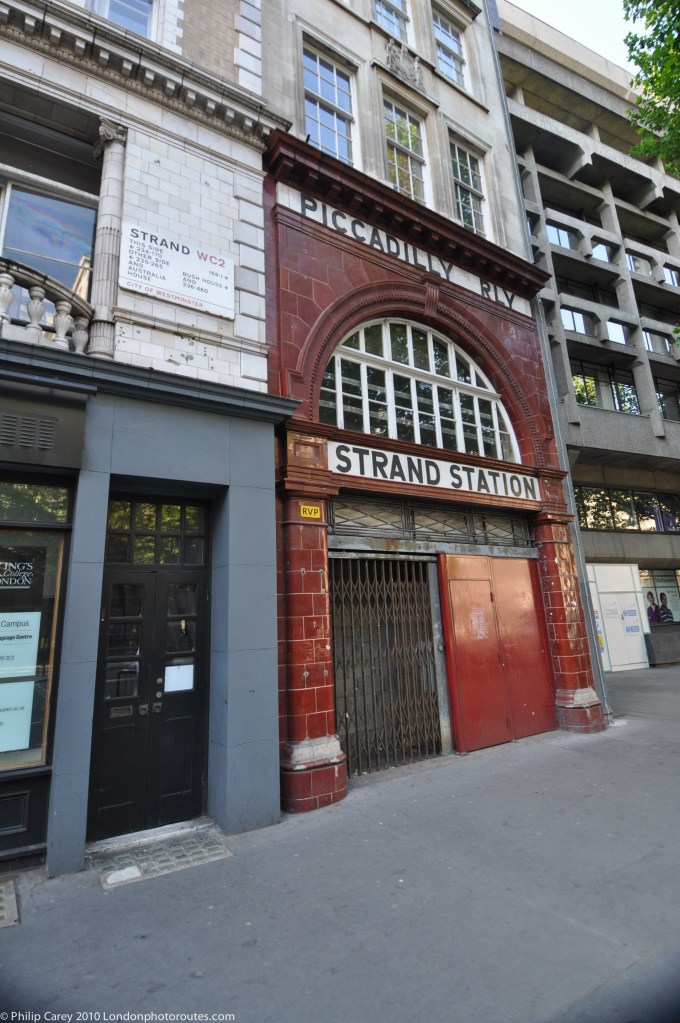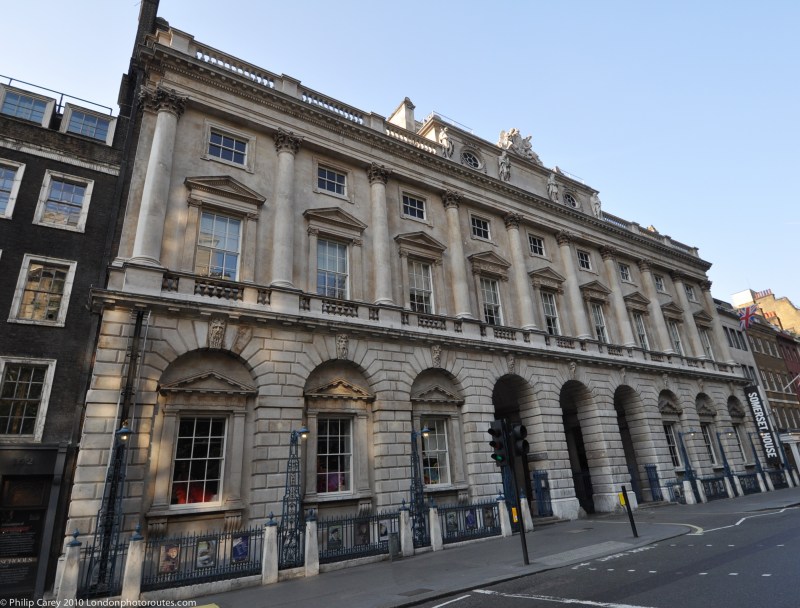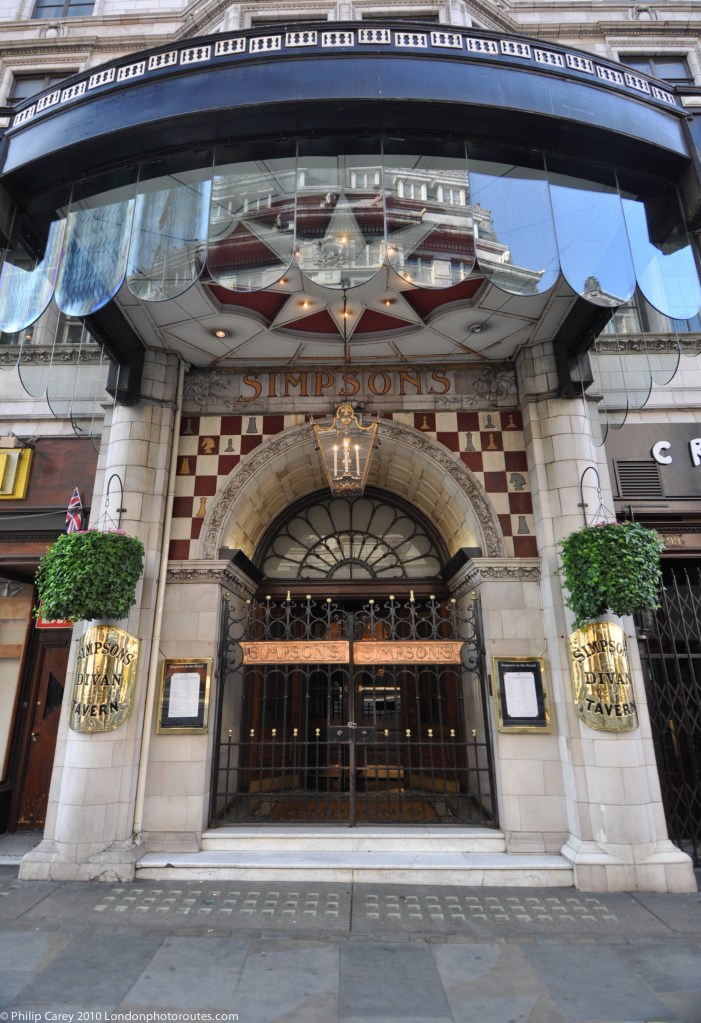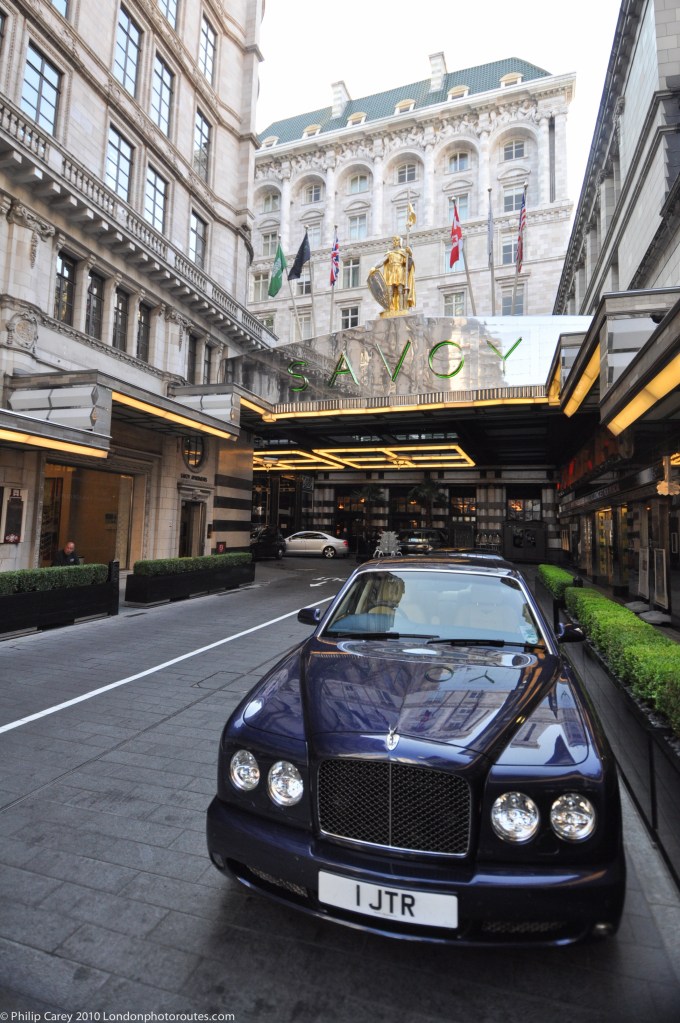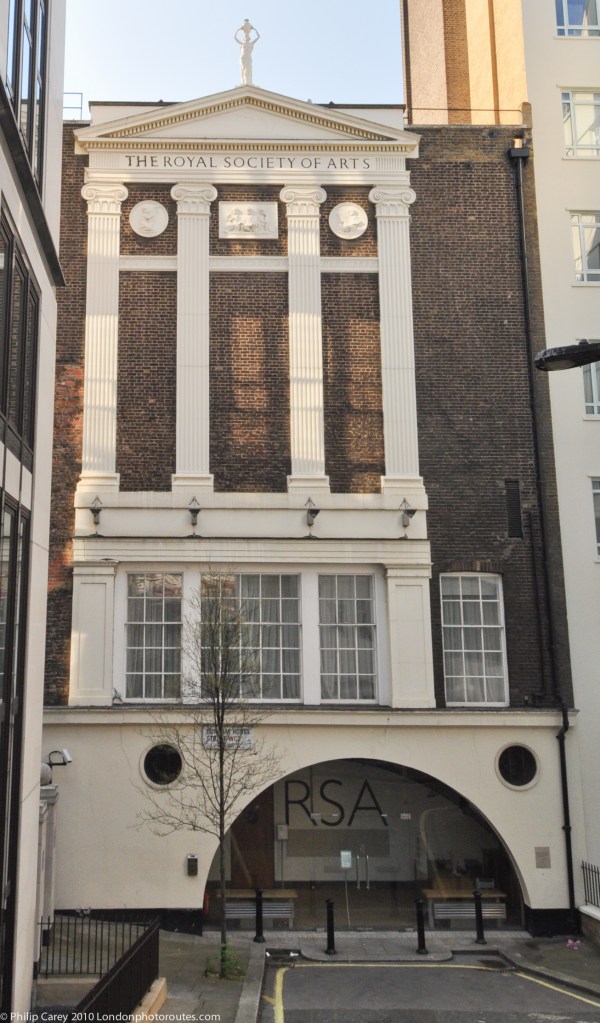London Streets are not easy to photograph and often look un interesting. However early in the morning during the summer months the Strand and the Aldwych are well lit and they do have some impressive building – although you do need a fairly wide lens. Its best to do this walk from the Aldwych to the Strand in the morning to get the sun behind you. There are lots of other areas to explore around this area even if conditions are not perfect.
The Strand is just over three-quarters of a mile long and links Westminster to the City of London as it goes from Charing Cross to the Law Courts. In the 11th century, it followed the edge of the River Thames and several large mansions were built along its banks – including Somerset House and Savoy Palace. The Strand has always been famous for theatres and in the 1890’s had more than any other street in London.
At the east end of the street are two old churches, St Mary-le-Strand and St Clement Danes which are now, owing to road-widening, situated on islands in the middle of the road. The length of road from St Mary’s church eastwards up to St Clement’s was widened in 1900
The Savoy
Built by impresario Richard D’Oyly Carte with profits from his Gilbert and Sullivan operas, the hotel opened on 6 August 1889. It was the first in the Savoy group of hotels and restaurants owned by Carte’s family for over a century. It was also the first luxury hotel in Britain, introducing electric lights throughout the hotel, electric lifts, bathrooms inside most of the lavishly furnished rooms, constant hot and cold running water and many other innovations. Carte hired manager César Ritz and French chef Auguste Escoffier, who established an unprecedented standard of quality in hotel service, entertainment and elegant dining, attracting royalty and other wealthy guests and diners. Winston Churchill frequently took his cabinet to lunch at the hotel
The Aldwych
The name, “Aldwych”, derives from the Old English meaning ‘old trading town’ or ‘old marketplace’; the name was later applied to the street and district
The modern street was created in a redevelopment in the early twentieth century, that saw the demolition of the old Wych Street and the construction of Australia House (built 1913-18) and Bush House (completed in 1925) – which contained the BBC World Service.
